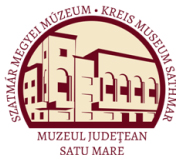Marta, Liviu: The Late Bronze Age Settlements of Petea-Csengersima (Satu Mare, 2009)
IV. Habitation of the Lăpuş II-Gáva I Archaeological Culture
Concerning the relation of the pottery from Petea—Csengersima with Gáva I type pottery, the possibilities of comparison are more clear with those of the settlements at Berveni and Carei from which greater quantities of ceramic material had been published and analysed635 (see the comparative table further down). In the comparison with the settlement at Nagykálló one has to keep in mind the 110 cm thickness of the cultural stratum636 that indicates a habitation of longer duration within this settlement. The comparison of the pottery from Nagykálló with the pottery from the settlements of the region of Satu Mare sustains the idea of the existence of certain ceramic materials specific of certain different time spans. The complete vessels found close to the bronze deposit and some of the pottery fragments from the settlement can be attributed to an early stage of the Gáva culture637. However some pottery fragments from the stratum and from pits contain specific elements of the developed phase of the Gáva culture638. This is the part of the pottery from Nagykálló for which there are no analogies in the Lăpuş II phase (from the north of Transylvania), Lăpuş II—Gáva I (from the Plain of Satu Mare), but neither within the discoveries attributed to the Gáva I phase in the region of Carei. The limited character of what had been published leaves a low-defined ceramic repertory of the first phase of the Gáva I culture in the northeast of Hungary. However the important role of the type 4 cup639 640 641 or the survival of the cooking vessel in the HaA period646 are elements that bring closer the pottery of this region with the one present in the area of Carei or in the Plain of Satu Mare. As the analysis of the pottery from Petea-Csengersima indicated there are several common traits with the pottery from the region of Carei. Common types and variants are found among amphorae (1, 2, 3A), pots (1A, 2B, 2A, 2A), cooking vessels, bowls/dishes (lAa, lAb, lAc, IBa, 2A, 2Ab, 2B, 4, 5) and cups (lAa, 4, 6). The vessel type and variants from the settlements in the region of Satu Mare that are absent from the area of Carei are: some amphorae (subtype 3B541 and type 4642), storage jars643, some pots (types 3644 and 4645), type 2 of cooking vessels and certain types and variants of cups (lAb, IB, 2646 and 5647). Even if some ornamental motifs present in Petea—Csengersima are missing from the pottery in the area of Carei (motifs BB, BD, CB, CC, DB, HD, HB), there are numerous common elements of ornamentation. In both regions the characteristic trait is given by the intense employment of facets on the rims, of wide channels and of the ribs. An important element is given by the extensive presence of deeply incised parallel lines (IA). In the case of the other incised ornaments it is difficult to make an exact parallel given their uncertain position within the settlement at Petea—Csengersima. The elements that differentiate the pottery from the area of Carei are first of all the finger-impressed appliqué belts648 and the 635 Németi 1990, p. 19-54. 636 Kemenczei 1982, p. 73. 637 Kemenczei 1982, abb.6/5, abb. 10/1-6, 11; pit XIII (abb. 3/6-8), the short cup with over raised handle (Kemenczei 1982 p. 86, abb. 5/11) 638 For example the bowl with out curving rim decorated with oblique channels on the rim or the numerous fragments with wavy line or zig-zag incisions (Kemenczei 1982, abb. 5/10,12, 6/1, 7/12, 8/5, 9/2). 639 Indicated by the great number of cups discovered at Debrecen—Haláppuszta (Kemenczei 1984, taf. CXXV/11-19) or in the settlement at Nyirmada (Tóth - Marta 2005, p.125, abb.l 1 /5,7). 640 Fischl — Kiss - Kulcsár 2001a, p. 133, abb.5/3. 641 An example in the settlement at Petea-Csengersima (considered an import). 642 An example in the settlement at Petea-Csengersima 643 The form is difficult to identify in the absence of larger fragments. 644 A vessel in the settlement at Petea-Csengersima 645 Two vessels in the settlement at Petea-Csengersima. 646 Two examples in the settlement at Petea-Csengersima. 647 An example present in Petea-Csengersima. 648 Németi 1990, p. 40, fig. 1/15, 11/3, 13/5. 90
